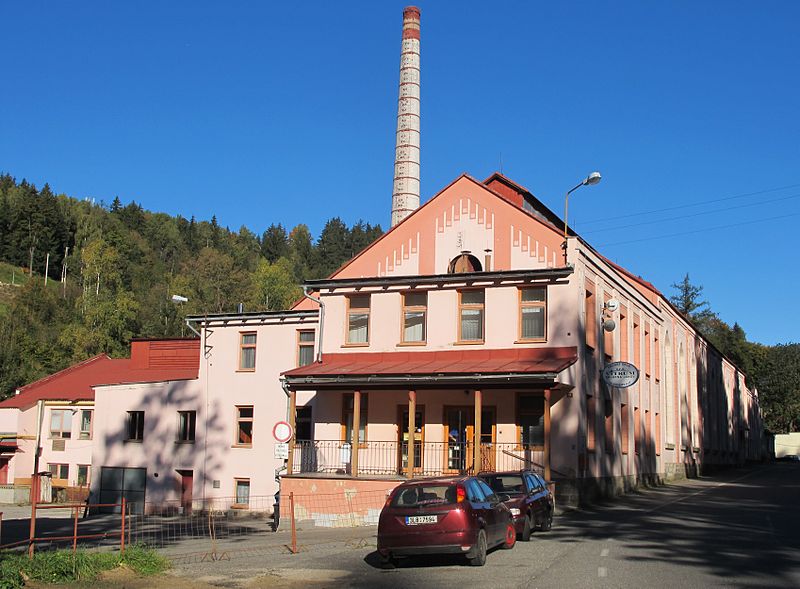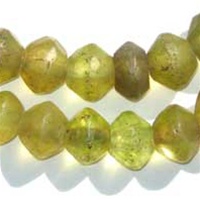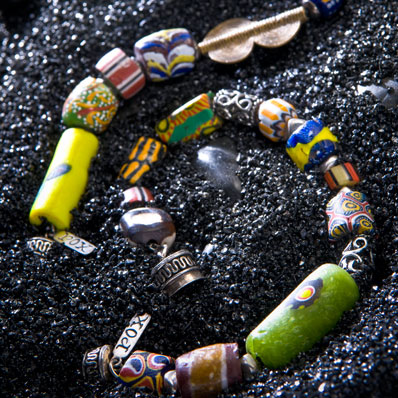Bead-Making in Czechoslovakia – A Brief History
Second to China, modern day Czechoslovakia is one of the world's largest producers of glass beads for the commercial market. But, it could have been a very different story had the Communists remained in power.
Glass bead production in Bohemia (now part of central Czechoslovakia) can be traced back to the times of Roman occupation around 400 A.D. From then until the 12th Century, it was largely a cottage industry; glass-makers manufacturing beads to order for Catholic rosaries and door hangings. The 1500s saw the rapid expansion of glass factories within cities such as Stanovsko, Reichenburg and Jablonec, most of which were eager to cash in on the growing demand for glass beads by Spanish, English and Italian merchants.
The Industrial Revolution of the 19th Century saw the invention of numerous machines that enabled bead-makers to produce pressed glass beads on a massive scale, and at far less expense. Such machines also allowed a greater variety of shapes and cuts to be achieved, earning Bohemia an enviable reputation for innovative designs – such as fluorescent Vaseline Beads, produced by mixing Uranium salts with glass.
Mass production of glass beads continued throughout the early 20th Century in North Bohemia, and by 1928, the newly formed Czechoslovakia had superseded Venice as the largest exporter of glass beads in the world. Sadly, this success was short-lived. A combination of events – the Great Depression and World War II – severely impacted the bead-making industry. The Sudeten German bead-makers of North Bohemia were forced to move to Neu Gablonz, within Germany's borders, meaning that many factories in Jablonec closed permanently.
The bead-making industry went into further decline from 1948 when the Marxist-Leninist Communist Party of Czechoslovakia came to power, forcing the closure of many more factories in Jablonec and Reichenburg. It was only in 1958, following the death of Stalin, that a group of artisans were able to muster enough backing to re-establish the industry. However, they were only able to do so by agreeing to the industry becoming nationalized by the Communist Party. They controlled all aspects of import and export to and from Czechoslovakia for the next forty years until they were ousted in 1989, after which, Czechoslovakia's former cottage industries again began to flourish once more.
Vaseline Trade Beads: A Radioactive Discovery?
We are proud to share with you the most comprehensive background on those beautiful beads known as Vaseline trade beads.
The 'radioactive era' as some refer to it was a period between the early
1900's, up to 1930 when a number of distinctive discoveries and advancements influenced an obsession with all things 'radioactive'. It was German chemist Martin Heinrich Klaproth who first discovered Uranium in 1789, however later revelations from French physicist Antoine Becquerel in 1896 proved that Klaproth had not isolated the metallic element - which we now know influences color under ultraviolet light.
Marie and Pierre Curie's work superseded these scientific announcements with the pioneering discovery of Radium in 1898. Interestingly, Marie Curie's work which extended to developing x-ray technology and radiography, won her two Nobel Prize Awards. Her work assisted in helping the treatment of soldiers during World War I, which is probably why she was also the first prize winner to be award two consecutive prizes, for two different types of work - chemistry and physics.
The trend for radioactive chemicals being used for decorative and everyday objects began around 1905. Everything from blown glass vases, to clock-faces, earthenware, pottery and Vaseline Beads were being made with the fluorescing properties of Uranium. Uranium influences an intense yellow-green, or violent green depending upon the kind of light it is subjected to, and appears to glow immensely in ultraviolet light.
Prior to the official discovery of Uranium as an isolated element, the compound was already being used (it is thought) within the production of glass trade beads. Several collections of faceted Vaseline Beads have been discovered, and are thought to date back to the 1830's - all feature the yellow-green characteristics attributed to the Vaseline Beads of the early 1900's. Vaseline Beads are often regarded as a product of Africa, however were first produced within Bohemia - now Czechoslovakia.
The fascination with radioactivity between 1905 and 1915 prompted a period of mass production for Vaseline Trade Beads, and not just within Bohemia. Several other countries, including England and Italy were also caught up with the fascinating properties Uranium salts influenced. Interestingly, it was only a concentration of 1-2% Uranium salts to a glass mold that would offset the chemical reaction that produces the green-yellow aesthetic.
Authentic Vaseline Beads produced around the late 1800's/ early 1900's are distinct due to their shape. Rondelles and discs were by far the most common shapes, however it is not unusual to uncover some with cut facets. Later replicas of Vaseline Beads were produced without Uranium (since later science also uncovered the possible harmful effects of radiation), and can be found in multiple hues. The Uranium was replaced with oxides or dyes during the molding process, and manual manipulation used to replicate the fluorescing qualities of Uranium.
Top 5 Reasons Why I Love Using Trade Beads in my Jewelry
Many of my fellow jewelers and craftsmen/women often ask about my obsession with trade beads. I use them in nearly every piece of jewelry I create, so it leads many to wonder, what is the significance of trade beads? Why use trade beads? Well, here are my top reasons for using trade beads in my jewelery.
-
Trade Beads are handmade, and made with love.
Unlike most of the beads in the market today, primarily dominated by Indian and Chinese beads, trade beads are each made by hand, with love, the old fashioned way. It feels nice knowing you are wearing something that was not made by a machine or robot, but rather, by a fellow human 🙂
-
Each bead is one of a kind.
Because trade beads are handmade, every single bead is unique and one of a kind. There are no two beads that are exactly the same! This is particularly noticeable when shopping for Millefiori beads and Venetian trade beads.
-
Wearing trade beads is like wearing a piece of history.
Trade beads date back as some of the oldest beads in modern history. Most trade beads have traveled at least three continents, and have been possessed by multiple owners, especially old trade beads. There's nothing like wearing a piece of history!
-
Shopping for trade beads is fun!
Shopping for trade beads is unlike shopping for most of other types of beads. Because every bead is handmade and one of a kind, shopping never gets old. You never see the same thing twice.
-
Trade beads are usually part of the fair trade.
Most trade beads are considered "fair trade beads", meaning the craftsmen, craftswomen, and artisans involved in creating the beads were not exploited in the process of bringing these beads to you. They are paid the amount they deserve. You know that when you purchase fair trade beads, you are helping to improve the lives of the people who made these beads for you.
Of course, these are only five of the many reasons why I love to use trade beads when creating jewelry. Their significance is unprecedented, and they are the most cultured of beads.
Why do you use trade beads in your jewelry? Post a comment below and share!


